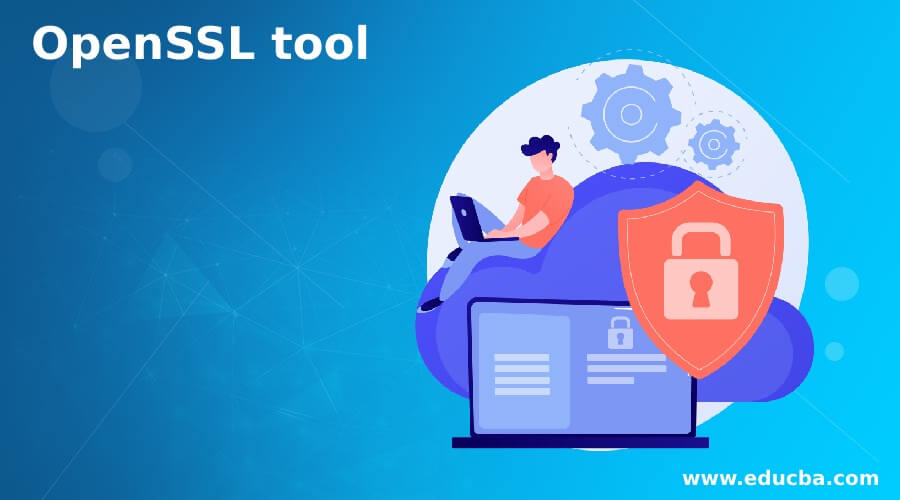Updated June 29, 2023

Introduction to OpenSSL Tool
SSL certificates are now in high demand. Since Google’s “HTTPS Everywhere” campaign, the encryption landscape has changed considerably. They initially gave digital certificates an SEO boost as an inducement to install them, and then Chrome made HTTPS nearly necessary for everyone. Popular browsers like Firefox and Chrome will label that website as Not Secure if you don’t use an SSL certificate.SSL deployment is critical to the success and security of a website. And, because so many website owners are learning about SSL for the first time, it’s critical to provide them with all of the necessary tools and services. OpenSSL is one such utility. In this topic, we are going to learn about the OpenSSL tool.
What is OpenSSL?
Open SSL is a general-purpose cryptography package that implements the TLS protocol in an open-source manner. It is available for Windows, Linux, macOS, and BSD computers and was first released in 1998. Users can use OpenSSL to execute various SSL-related operations, such as generating CSRs and private keys and installing SSL certificates.
What is the Purpose of OpenSSL?
The user applies for a digital certificate and installs SSL files on the server using OpenSSL Generate the Certificate Signing Request). You can also convert your certificate to different SSL formats and do additional verifications.
How to Use OpenSSL?
It’s all about the command lines in OpenSSL. We’ve included a list of typical OpenSSL commands for individual users below.
Make sure you’re using the most recent version of OpenSSL.
Knowing your OpenSSL version is critical since it dictates your cryptographic algorithms and protocols.
The most recent OpenSSL release was 1.1.1. It’s the first version to provide support for TLS 1.3. The two previous releases, 1.0.2 and 1.1.0, are still supported.
Run the following command to see what version of OpenSSL you have:
openssl version–aCSR Generation
Users can generate their own CSR code with OpenSSL. A CSR is a block of encoded text that contains information about the website and business. Users should submit the CSR for approval to the Certificate Authority. The certificate request requires a private key, which generates the public key. While you can utilize a current private key, producing a fresh one whenever users create a CSR is best.
How to Generate Private Keys Separately?
Users must specify the key algorithm, size, and an alternate passphrase to produce their private key. RSA is The typical key algorithm. However, ECDSA can be used in some cases. Ensure users won’t have any compatibility difficulties while selecting a key algorithm.
When utilizing the RSA key algorithm, choose 2048 bits for key size and 256 bits for the ECDSA algorithm. Any key size less than 2048 is insecure, while a greater value may cause performance to suffer.
Then, users must determine whether or not they require a passphrase for the private key. Some servers will refuse to accept private keys with passwords.
Run the commands below whenever ready to produce a private key (using the RSA algorithm):
opensslgenrsa -out domain.key 2048The domain.key file will be created in your current directory using this command. The PEM format will be used to store your private key.
The encoded contents of your private key can be viewed with the following command:
cat domain.keyRun the following command to decode the private key:
opensslrsa -text -in domain.key -noout
How to Extract Public Key?
To extract the public key from the private key, the following command is used:
opensslrsa -in domain.key -pubout -out domain_public.keyGenerate a Certificate Signing Request
It’s time to build CSR after you’re successfully generating the private key. It will be in PEM format and contain information about the business and the public key generated from the private key. To generate a CSR, use the following command:
opensslreq -new -key domain.key -out domain.csrOpenSSL will ask users a few questions.
Consider the following situations:
- Country Name: Enter the country’s two-letter code. Ensure the country user submits their organization’s official residence if the user has a Business Validation or Extended Validation certificate.
- Name of State/Province: Enter the state where the user’s business is registered.
- Name of Locality: Enter the name of the city or town where the company is located.
- Organization Name: Enter your company’s official registered name. For Domain Validation certificates, for example, users can use NA.
- Organization Unit Name: It’s commonly Web Administration.
- Common Name: Enter the Fully Qualified Domain Name (FQDN) to which your SSL certificate will be assigned. Consider the domain educba.com. Add an asterisk before the domain name (e.g., *.educba.com) to activate a wildcard certificate.
- Email Address: Give a valid email address.
- A challenging password: The Certificate Authorities no longer require an out-of-date characteristic. If there is any confusion, leave this box blank.
Verify the Certificate’s Information
After CA sends an SSL certificate, execute the command below to ensure the certificate’s information matches the private key.
openssl x509 -text -in domain.crt –nooutConclusion – OpenSSL Tool
In this article, we have seen the list of popular OpenSSL commands if you want to learn more about OpenSSL and how it works.
Recommended Articles
We hope that this EDUCBA information on “OpenSSL Tool” was beneficial to you. You can view EDUCBA’s recommended articles for more information.

